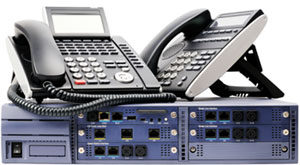How to Migrate from a PSTN to SIP Trunking

Session Initiation Protocol (SIP) trunking has both advantages and disadvantages when compared to a public-switched-telephone-network (PSTN).
SIP can be more flexible because it works independently of the type of session or media used. Because it is an open standard, applications can be written to customize SIP uses. SIP can also accommodate multiple users with differing capabilities. SIP, however, is still a new technology and requires trained personnel to deploy and maintain it. As SIP features are still being developed, many vendors have proprietary implementations of the protocol. Although PSTN is an older technology, it has built-in reliability, security and emergency location services.
If you have decided to migrate from PSTN to SIP trunking, there are several areas of best practices to consider including providers, deployment, network design, and security.
Selecting a SIP Trunking Provider
When selecting a SIP trunk service provider, choosing a provider that owns the physical delivery medium to your premises along with the service will guarantee quality of service. If you are considering a different provider than the one that currently provides your current PSTN service, verify that you can transfer existing direct-inward-dialing (DID) numbers to the new provider and determine how long the transfer will take.
SIP trunk services are currently unregulated and can vary in terms of offerings and pricing, so evaluate your options carefully. One way to evaluate the various options is sample test plans by doing proof-of-concept trials before deploying SIP trunking into your business network. Some features that might require particular attention are Malicious Call Identification (MCID), Multilevel Priority and Preemption (MLPP), voice-band data (point-of-sale [POS] terminal, alarm systems, etc.), caller ID delivery, recording, and 911 call routing and solutions. Discuss these with your provider to insure that the new system meets the needs of your business.
Deploying a SIP Trunking Solution

When you have decided on the best SIP trunk service provider and are ready to deploy the new system, plan carefully and do not rush into production deployment. Define the various user communities or cite the call flows that will be included in the different phases of deployment. For example, call flows might include inbound, outbound, long distance, contact center, or general business calls. If your business has sites in different regions, keep in mind that SIP trunk provider readiness and cost may vary significantly between regions, countries, and continents. Your deployment plan may require geographical phases.
One critical component of your network design is the Session Border Controller (SBC). An SBC offers security, demarcation, session management, and interworking features that protect your network from denial-of-service (DoS) and other SIP-based attacks, allow you to resolve troubleshooting problems, provide SIP trunk status monitoring tools, and aid in SIP manipulation to overcome myriad interoperability problems present in the industry. Other factors to consider is whether you need a centralized or distributed SIP trunk design, the division of responsibility between you and and the service provider for determining the source of voice quality concerns, and general protocol for problem investigation and resolution.
Designing your SIP Trunking Service
The design of your system will determine how to ensure that the system is secure. For a very small network, a firewall or NAT device may be sufficient. Bigger networks, however, may require a Layer 7 SBC device with additional protection, configuration, and traffic control. Toll fraud is the single most-often reported security attack on SIP trunks today and the best way to protect against toll fraud is to deploy toll-fraud features on your SBC. Work with your provider to put in place any features and protocols that can help protect your network.
Key to a successful migration is having the right team on board. Do extensive research to make sure you've chosen the right provider. This provider can help design and deploy your solution, making sure it's secure and cost-effective for your business. Don't limit yourself to speaking to a single vendor - speak to sales agents who represent multiple companies and who can tell you about the pros and cons of all.